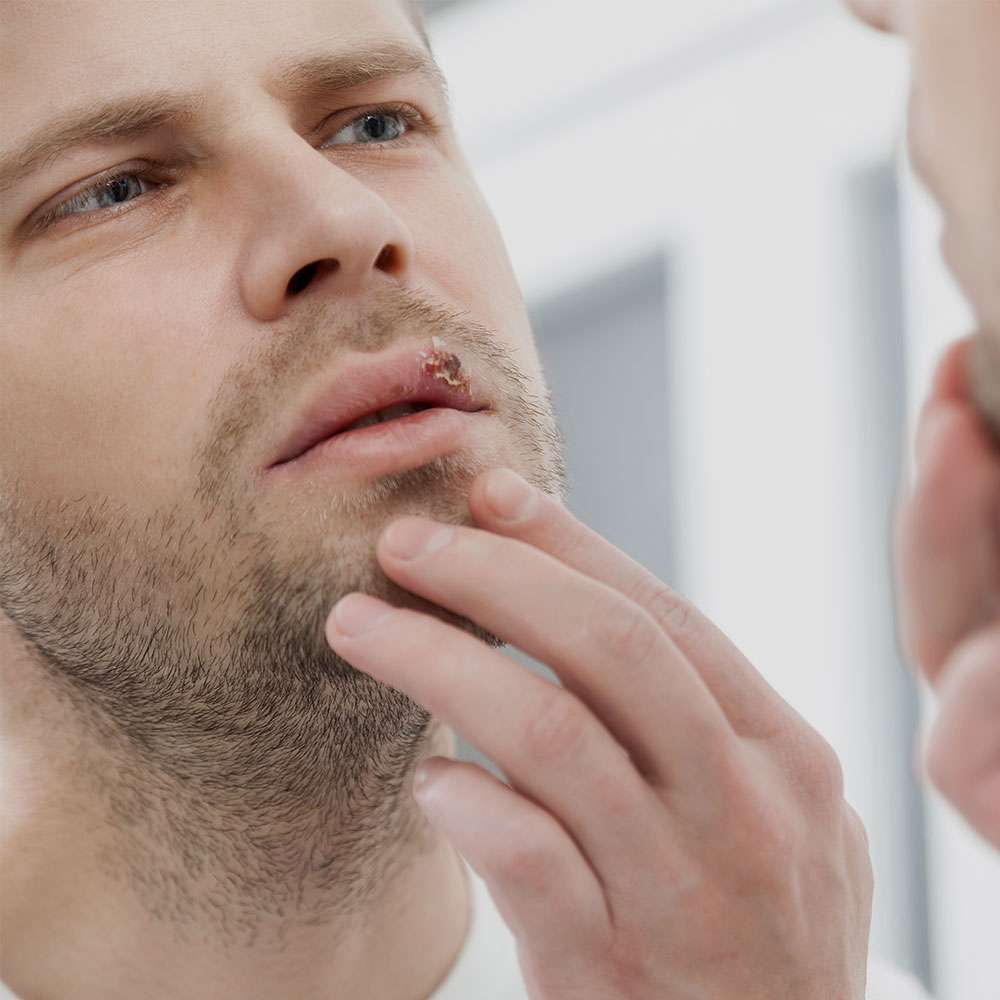Treat Cold Sores with Compeed®
How to Treat your cold sores with Compeed® in 3 easy steps
Preparation
Clean the affected area gently with soap and water and dry gently.
Application of Compeed® Cold Sore Discreet Healing Patches
Use applicator and gently press down to firmly place the patch on the cold sore.
Avoid touching
Keep it clean, dry, and protected from further friction and stress.
Learn how to heal your cold sore fatser with Compeed® Cold Sore Discreet Healing Patches

Cold sores are small blisters that usually appear on or around the lips and mouth. In most cases, the blisters will break, creating a scab that eventually falls off. Cold sores are the most contagious when they rupture. However, they are actually contagious from the time you first feel any symptoms around your mouth, like tingling or itching, until they are completely healed.

Nothing can clear up a cold sore overnight but there are a few things you can do to shorten the duration of a cold sore outbreak and to speed up the healing process.

Cold sores or fever blisters are a result of an inflammatory reaction following an infection by the herpes simplex virus 1 or its reactivation. Cold sores cannot be avoided all the time, but treating it before it develops into a larger sore is a good way to limit frustration, discomfort and the feeling of isolation.

Cold sores, also called herpes or fever blisters, are groups of small, fluid-filled blisters. The blisters are most often gathered in patches on the lip and around the mouth. Before an outbreak, you often feel a tingling sensation or stinging pain. Then the blisters appear, and they usually burst, ooze, crust over and disappear after several days to two weeks. If you don’t treat your cold sore, it usually lasts 7-10 days, but can remain for up to two weeks. Although there is no cure for cold sores, you can control the pain, the severity of the outbreak and you can help speed up the healing process.

If you suffer from cold sores, you are not alone. About two thirds of people under the age of 50 years are infected with herpes simplex virus type 1 (HSV-1), the virus responsible for cold sores[1]. In Europe, it corresponds to a little bit more than 200 million women (69%) and 187 million men (61%). Herpes infection is mostly asymptomatic but can cause mild symptoms or painful blisters. Cold sores cannot only be irritating but also embarrassing with social, and emotional impact. In extreme cases, it may lead to social isolation. But don’t forget – you’re not alone.
FAQ
Got questions? We’ve got you covered!
Cold sores are caused by the herpes simplex virus. Cold sore outbreaks, where a cold sore blister appears on the skin, are often triggered by temperature changes (for example, hot or cold weather). Additionally, stress and anxiety, amongst others, can also trigger a cold sore.
Cold sores generally heal in 7 - 12 days. Always consult a doctor or pharmacist if the cold sore does not heal or if it appears to get worse.
Compeed® Cold Sore Hydrocolloid technology is an active gel that acts like a second skin. It seals your cold sore, allowing acceleration of your body’s natural healing mechanism.
You can start to use when you first feel a tingle and continue using a patch day and night throughout the outbreak until the lesion is fully healed.
Though cold sore outbreaks can't be prevented, the following may minimize spread of cold sores and reduce the frequency of outbreaks:
Always wash your hands before and after touching the cold sore lesion.
Avoid kissing, sharing drinks and lip products until the sore has healed.
If you know the triggers for your cold sore, try to minimize your exposure. For example, you can apply lip balms with SPF if your cold sores are triggered by extreme weather.
It is not possible to avoid infection of the Cold Sore Virus or to completely avoid future outbreaks.
Cold sores are painful blisters on the face, primarily around the lips, caused by the Herpes Simplex Virus (HSV). While there are different variations of the herpes virus, the most common are Herpes Simplex Virus 1 (HSV-1) and Herpes Simplex Virus 2 (HSV-2), with HSV-1 being considerably more prevalent than HSV-2. HSV-1 usually causes cold sores, while HSV-2 most commonly causes genital herpes.
